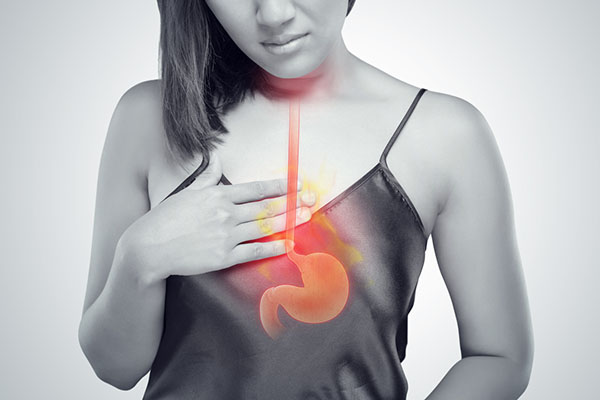Understanding Barrett’s Esophagus
Barrett’s esophagus is a condition in which the tissue lining the esophagus, the tube that carries food from the mouth to the stomach, is replaced by tissue similar to the lining of the intestine. This change is called intestinal metaplasia. Barrett’s esophagus is associated with an increased risk of developing esophageal adenocarcinoma, a type of cancer of the esophagus.
Risks Associated with Barrett’s Esophagus
Gastroesophageal Reflux Disease (GERD)
- Chronic Acid Reflux: The primary risk factor for Barrett’s esophagus is chronic gastroesophageal reflux disease (GERD). GERD causes stomach acid to frequently flow back into the esophagus, damaging the normal lining and potentially leading to Barrett’s esophagus.
- Severity and Duration: The risk increases with the severity and duration of GERD. Long-term exposure to acid reflux is more likely to result in Barrett’s esophagus.
Demographic Factors
- Age: Barrett’s esophagus is more commonly diagnosed in people over the age of 50.
- Gender: Men are more likely to develop Barrett’s esophagus than women.
- Ethnicity: Caucasian individuals have a higher risk compared to other ethnic groups.
Lifestyle Factors
- Obesity: Being overweight, particularly with excess belly fat, increases the risk of Barrett’s esophagus. Obesity is linked to increased abdominal pressure and a higher incidence of GERD.
- Smoking: Current and former smokers are at a higher risk of developing Barrett’s esophagus. Tobacco use is known to damage the esophageal lining and exacerbate GERD symptoms.
Family History
- Genetic Predisposition: A family history of Barrett’s esophagus or esophageal adenocarcinoma can increase an individual’s risk, suggesting a possible genetic component to the condition.
Prevention of Barrett’s Esophagus
While it may not be possible to completely prevent Barrett’s esophagus, certain strategies can reduce the risk or slow its progression:
Managing GERD
- Medications: Proton pump inhibitors (PPIs) and H2 receptor blockers are commonly prescribed to reduce stomach acid production and alleviate GERD symptoms. These medications can help prevent further damage to the esophagus lining.
- Lifestyle Changes: Adopting lifestyle modifications can significantly reduce GERD symptoms and the associated risk of Barrett’s esophagus. This includes:
- Dietary Adjustments: Avoid foods and beverages that trigger acid reflux, such as spicy foods, citrus fruits, chocolate, caffeine, and alcohol.
- Weight Management: Maintaining a healthy weight through diet and exercise can reduce abdominal pressure and lower the risk of acid reflux.
- Eating Habits: Eating smaller, more frequent meals instead of large meals and avoiding lying down immediately after eating.
- Elevating the Head of the Bed: Raising the head of the bed by about 6 to 8 inches can prevent acid from flowing back into the esophagus while sleeping.
- Avoiding Smoking: Quitting smoking can reduce the risk of Barrett’s esophagus and improve overall esophageal health.
Regular Monitoring
- Endoscopic Surveillance: Individuals with chronic GERD or other risk factors should undergo regular endoscopic examinations to monitor for signs of Barrett’s esophagus. During an endoscopy, a doctor can examine the esophagus and take biopsies of suspicious areas.
- Biopsy and Histological Examination: If Barrett’s esophagus is diagnosed, regular biopsies can help detect any precancerous changes or early-stage cancer, allowing for timely intervention.
Early Detection and Treatment
- Radiofrequency Ablation (RFA): This procedure uses heat to remove abnormal cells in the esophagus lining. It is often used to treat precancerous cells and prevent progression to cancer.
- Endoscopic Resection: This procedure involves removing abnormal tissue using an endoscope. It is used for treating high-grade dysplasia and early-stage esophageal cancer.
- Surgical Options: In severe cases, surgical removal of the affected part of the esophagus may be necessary.
Importance of Lifestyle Choices in Prevention
Making informed lifestyle choices is a pivotal aspect of preventing Barrett’s esophagus and managing its progression. Adopting a balanced diet rich in fruits, vegetables, whole grains, and lean proteins can not only help maintain a healthy weight but also reduce acid reflux episodes. Regular physical activity is equally essential, as it promotes overall well-being and aids in weight management, thereby decreasing abdominal pressure and the likelihood of GERD. Additionally, it is crucial to avoid habits that can exacerbate GERD symptoms, such as lying down immediately after meals or consuming large quantities of food in a single sitting. By embracing these lifestyle changes, individuals can significantly lower their risk of developing Barrett’s esophagus and enhance their overall digestive health.
Conclusion
Barrett’s esophagus is a serious condition that increases the risk of developing esophageal cancer. Understanding the risk factors, particularly chronic GERD, and implementing preventive measures can help reduce this risk. Managing GERD through lifestyle changes and medications, regular monitoring, and early detection and treatment of abnormal cells are crucial steps in preventing the progression of Barrett’s esophagus. If you have chronic GERD or other risk factors for Barrett’s esophagus, consult with your healthcare provider to develop a comprehensive plan for monitoring and prevention.



 Close
Close